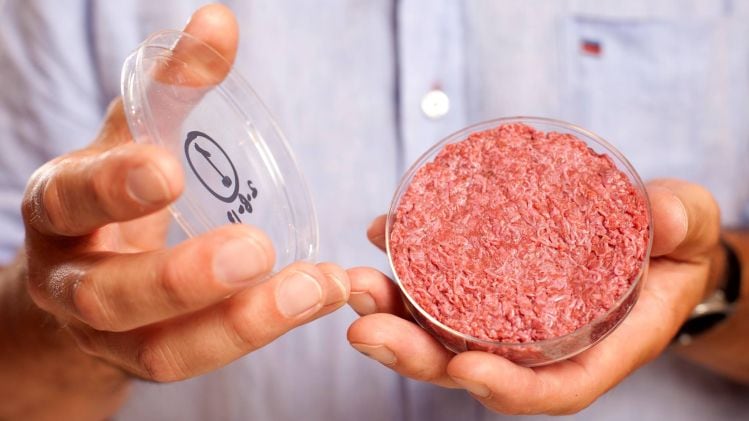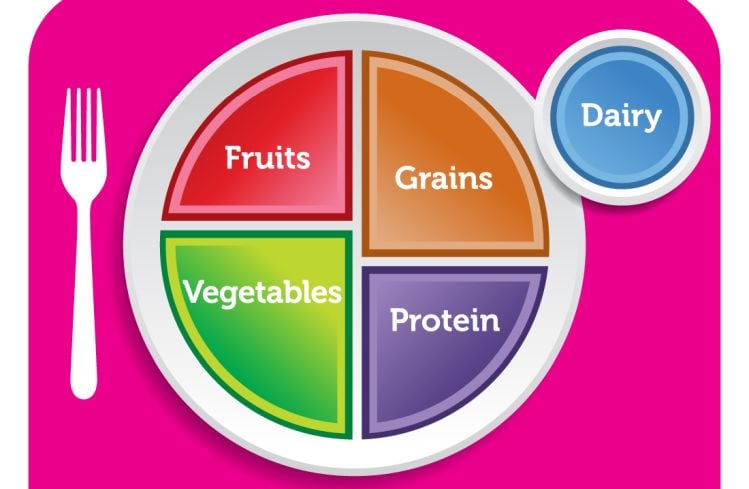It seems likely, predicts Marion Nestle, Paulette Goddard Professor of Nutrition, Food Studies, and Public Health at New York University, who sat on the DG advisory committee in 1995 and claims that “the influence of food companies on the guidelines occurs in several ways, some transparent, some not.”
She adds: “Food companies nominate or financially support committee members; by some estimates, half the 2020 DGAC members have such ties. They file comments and testify at hearings and they also lobby Congress and the USDA. By this time, the guidelines have internalized food industry values.
“The most obvious example is that when the guidelines talk about foods to eat more of, they cite foods—fruits, vegetables, whole grains, nuts. When they talk about what you should eat less of, they switch to nutrients: sugar, sodium, saturated fat [rather than spelling out, for example, that consumers should eat less red meat or cheese].
“The recommended number of meat and dairy servings is a direct response to industry lobbying. So is the absence of discussion of sustainability with respect to meat consumption.”
Dietary guidelines must address the environmental implications of the ways we produce, consume, and waste food
As for whether environmental factors should factor into dietary advice, Dr Nestle argues, “The two huge papers published by The Lancet in January are too important to be ignored [click HERE]. They review the evidence for the health and environmental benefits of eating a largely - although not necessarily exclusively - plant-based diet.
“Dietary guidelines have always extolled the benefits of plant foods for health reasons. If US guidelines are to keep up with those in the rest of the world, they must address the environmental implications of the ways we produce, consume, and waste food.”

Are agency officials better equipped to interpret research than nutrition scientists?
If dietary guidelines are about interpreting the latest nutrition science, meanwhile, adds Dr Nestle, why don't the nutrition experts on the committee write them, rather than handing this task over to HHS and USDA? [Click HERE to see the 2020 advisory committee members.]
“When I was on the DGAC in 1995, we wrote the research report and the actual dietary guidelines document based on that research report," she says.
“Are agency officials better equipped to interpret research than nutrition scientists? I don’t think so. I was a reviewer of the 2015 guidelines draft and I can tell you that I have no idea how the agencies handled my comments and, presumably, the others they got. That process is entirely secret. I can’t think of a single reason why the new process is better. If anything, it allows politics to take precedence over science.”
The fact that the final version of the 2015 guidelines omitted a well-publicized segment in the DG advisory report advising Americans to reduce consumption of red and processed meat on health and environmental grounds is a “prime example of food industry meddling in public health matters,” she claims.
“HHS and USDA were forced to by Congress in response to industry lobbying. Congress put language in an agricultural appropriations bill forbidding the USDA secretary from including anything about sustainability or any other environmental consideration. The USDA Secretary caved in immediately and the HHS Secretary went along with it.”
Las Vegas-based registered dietitian (RD) Andy Bellatti added: "I was in disbelief that HHS and USDA would make such a myopic claim [that the dietary guidelines are not appropriate vehicles for policy conversations about sustainability], especially with the link between diet and climate change increasingly becoming more clear.
"Diet is a central tenet of sustainability. I suspect HHS and USDA simply didn't feel comfortable with pointed advice, and it perfectly shows why USDA should not be involved in the Dietary Guidelines: part of its mission is to promote the beef industry and meat production.
"The dietary guidelines should be left to public health experts. Industry's tantrums shouldn't be given any attention, especially when they are about protecting corporate profits at the expense of public health."

Plant-based alternatives are not the answer to all issues of health, sustainability or cost
So should the 2020 guidelines reflect the Eat Lancet report and push for a more radical rethink of the American diet that embraces a more plant-focused diet on sustainability and health grounds?
“Given what we now know about energy utilization and resources required to make a meal, it is something that should be considered,” says Alexandra Oppenheimer Delvito, MS, RD, CDN, VP at Pollock Communications.
Historically, however, the guidelines were designed “to prevent deficiency and provide [nutritional] guidelines for the general public” rather than fix the broken food system, she points out, and as the controversy over the EAT Lancet report demonstrated, there is still intense debate over what that fix looks like.
“Like my colleague Jenna Bell, PhD, RD, says, plant-based alternatives are not the answer to all issues of health, sustainability or cost… She says rather than replacing all your animal-based foods with plants, why not adopt a new balance: a food-based diet with a variety of food categories, diverse nutrients and prepared with numerous international flavors and cooking styles?”
Meanwhile, the advent of new production methodologies for producing animal proteins in a more sustainable manner - from cell-cultured meat to dairy and egg proteins produced via microbial fermentation – could change the equation again in five or 10 years, meaning advice to eat ‘plant-based’ may not be the most sustainable and healthy option, she says.
“Peer-reviewed research on dairy and egg proteins produced via microbial fermentation, and cell-cultured meat should dictate if they are included in future guidelines.”

All stakeholders have the opportunity to comment
While the “middle step [between the publication of the DGA committee report and the final guidelines drawn up by USDA and HHS] can be a bit of a mystery,” she adds, the public comment process gives all stakeholders the opportunity to have their say.
“I don’t believe food companies or trade associations exert too much influence on the Dietary Guidelines process. They have the equal opportunity to share their research and recommendations just the same as health promotion organizations, health professionals and the public. It is valuable to have all these entities provide comment in order for the DGAC to consider all the types of food and beverages, and the full breadth of peer-reviewed research.”
'The guidelines are not meant for the public, really'
To those who wonder why any of this even matters, given that most Americans are blissfully unaware of the Dietary Guidelines they are supposed to be following, and face barriers that prevent them from making healthy choices even if they want to eat better, Delvito says:
“While Americans may not pay close attention to the guidelines themselves, this information is what guides educational tools like MyPlate, that consumers see in the supermarket and doctors’ offices. They also help set the standard for feeding assistance programs – for how children are fed in school or after school, or the foods that can be accessed by those faced with food insecurity.”
Dr Nestle adds: The guidelines are not meant for the public, really. They are meant for federal nutrition and food assistance programs, nutritionists, and, indirectly, the food industry. This still makes them hugely important, which is why the fights over them are so fierce.”
'The guidelines are not written in a language that the public can understand'
If the report’s authors want the American public to pay more attention, meanwhile, says Bonnie Taub-Dix, RDN, creator of BetterThanDieting.com and author of Read It Before You Eat It - Taking You from Label to Table, they should make it easier to translate theory into action.
“One issue I have with the guidelines is that they are not written in a language that the public can necessarily understand. What does ‘nutrient density’ really mean?
"What does ‘Try to have less than 10 percent of your total calories come from saturated fat?’ Those ‘percentage’ recommendations are particularly confusing when so many of us don’t even know how many calories we actually need.”
She adds: “The guidelines, as they are released, would also seem overwhelming to the average consumer. You need a ‘Cliff Note’ bulleted version to absorb the main points… But overall, I think they are an attempt to encourage a balanced way of eating and support small changes that could result in improved eating habits.”
"It's true that the dietary guidelines are very 'inside baseball'; it's only of interest to food policy wonks and some health professionals. The average American doesn't know who writes them, how often they are released, or what they recommend. But, they matter because they often serve as the basis for food and nutrition policy."
Andy Bellatti, RD
- Read the latest public comments (deadline March 12, 2020).



